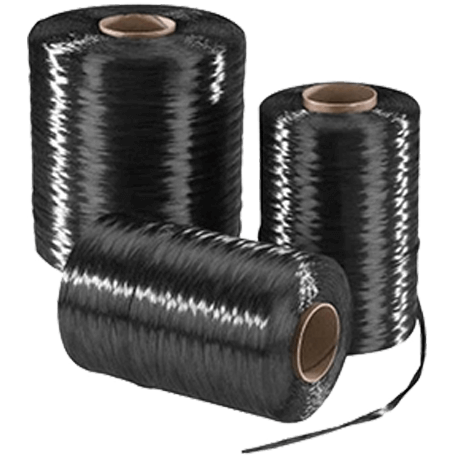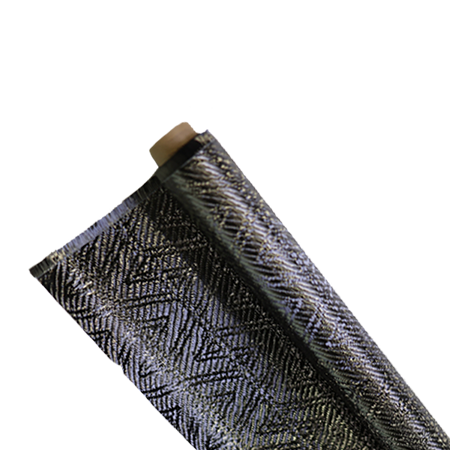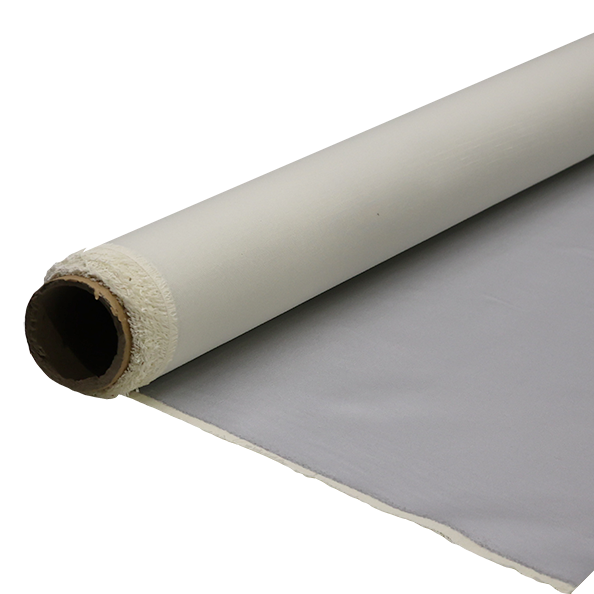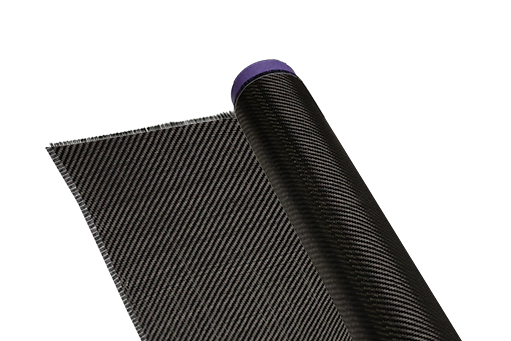Unleashing Strength: The Power and Versatility of Aramid Yarn
-
Table of Contents
“Unyielding Strength, Unmatched Durability: High-Performance Aramid Yarn for Superior Industrial Ropes and Cables.”
Introduction
High-performance Aramid Yarn is a specialized synthetic fiber known for its exceptional strength, durability, and resistance to heat and abrasion, making it an ideal material for industrial ropes and cables. These yarns are engineered to withstand extreme conditions, including high temperatures and harsh environmental factors, while maintaining their structural integrity. The unique properties of aramid fibers, such as low stretch and high tensile strength, enable the production of lightweight yet robust ropes and cables that are essential in various applications, including marine, construction, and aerospace industries. As the demand for reliable and high-performance materials continues to grow, Aramid Yarn stands out as a critical component in enhancing the safety and efficiency of industrial operations.
Advantages of Aramid Yarn in Industrial Rope Manufacturing
The use of Aramid Yarn in industrial rope manufacturing has gained significant attention due to its remarkable properties and advantages. Aramid fibers, known for their exceptional strength-to-weight ratio, offer a unique combination of durability, heat resistance, and chemical stability, making them an ideal choice for various industrial applications. One of the primary benefits of Aramid Yarn is its high tensile strength, which allows ropes and cables to withstand substantial loads without compromising their structural integrity. This characteristic is particularly crucial in industries such as construction, marine, and aerospace, where safety and reliability are paramount.
Moreover, Aramid Yarn exhibits excellent resistance to abrasion, which is essential for ropes that are subjected to harsh environmental conditions. Unlike traditional materials, aramid fibers maintain their performance even when exposed to rough surfaces or extreme weather. This durability not only extends the lifespan of the ropes but also reduces the frequency of replacements, leading to cost savings for manufacturers and end-users alike. Additionally, the lightweight nature of Aramid Yarn contributes to ease of handling and transportation, further enhancing its appeal in industrial settings.
Another significant advantage of Aramid Yarn is its thermal stability. Aramid fibers can withstand high temperatures without losing their mechanical properties, making them suitable for applications where heat exposure is a concern. For instance, in industries such as oil and gas, where equipment may be subjected to extreme heat, aramid ropes can perform reliably without degrading. This thermal resistance also translates to enhanced safety, as the risk of rope failure due to heat-related issues is minimized.
Furthermore, Aramid Yarn is inherently resistant to chemicals, including oils, solvents, and other corrosive substances. This property is particularly beneficial in environments where ropes and cables may come into contact with harsh chemicals, as it ensures that the materials remain intact and functional over time. The chemical resistance of Aramid Yarn not only enhances the performance of industrial ropes but also contributes to their longevity, making them a preferred choice for various applications.
In addition to these physical properties, the versatility of Aramid Yarn allows for customization in rope manufacturing. Manufacturers can tailor the construction and design of ropes to meet specific requirements, such as varying diameters, lengths, and configurations. This adaptability enables the production of specialized ropes that cater to the unique needs of different industries, further solidifying Aramid Yarn‘s position as a leading material in industrial applications.
Moreover, the environmental impact of Aramid Yarn is worth noting. As industries increasingly prioritize sustainability, the use of aramid fibers, which can be produced with a lower environmental footprint compared to traditional materials, aligns with these goals. The durability and longevity of aramid ropes also contribute to reduced waste, as fewer replacements are needed over time.
In conclusion, the advantages of Aramid Yarn in industrial rope manufacturing are manifold. Its high tensile strength, abrasion resistance, thermal stability, and chemical resistance make it an exceptional choice for a wide range of applications. Additionally, the versatility and environmental benefits of Aramid Yarn further enhance its appeal in the industrial sector. As industries continue to evolve and demand more reliable and efficient materials, Aramid Yarn is poised to play a crucial role in the future of industrial rope and cable manufacturing, ensuring safety, performance, and sustainability.
Applications of High-Performance Aramid Yarn in Cables

High-performance Aramid Yarn has emerged as a pivotal material in the manufacturing of industrial ropes and cables, owing to its exceptional strength-to-weight ratio, thermal stability, and resistance to abrasion and chemicals. These properties make Aramid Yarn an ideal choice for a variety of applications across multiple industries, including marine, construction, telecommunications, and aerospace. As industries continue to evolve and demand more robust and reliable materials, the role of Aramid Yarn in cables becomes increasingly significant.
In the marine industry, for instance, the use of high-performance Aramid Yarn in mooring lines and towing cables has revolutionized the way vessels are secured and maneuvered. The inherent strength of aramid fibers allows for the production of lighter yet stronger ropes, which not only enhance the efficiency of operations but also reduce the physical strain on equipment and personnel. Furthermore, the excellent resistance of Aramid Yarn to UV radiation and saltwater corrosion ensures that these ropes maintain their integrity and performance over extended periods, even in harsh marine environments. This durability translates into lower maintenance costs and increased safety for maritime operations.
Transitioning to the construction sector, high-performance Aramid Yarn is increasingly utilized in the reinforcement of cables used in various applications, such as suspension bridges and high-rise buildings. The tensile strength of aramid fibers allows for the creation of cables that can withstand significant loads while minimizing the risk of failure. Additionally, the lightweight nature of Aramid Yarn facilitates easier handling and installation, which is particularly advantageous in projects where time and labor costs are critical factors. As construction techniques advance, the integration of Aramid Yarn into cable systems is likely to become more prevalent, further enhancing structural safety and longevity.
In the telecommunications industry, the demand for high-performance materials is driven by the need for reliable and efficient communication systems. Aramid Yarn is often employed in the production of fiber optic cables, where it serves as a protective layer that safeguards delicate fibers from mechanical stress and environmental factors. The lightweight and flexible nature of Aramid Yarn allows for the design of cables that can be easily installed in various settings, from urban environments to remote locations. Moreover, the thermal stability of aramid fibers ensures that these cables can operate effectively across a wide range of temperatures, making them suitable for diverse applications.
The aerospace sector also benefits from the unique properties of high-performance Aramid Yarn. In this industry, cables are subjected to extreme conditions, including high temperatures and significant mechanical stress. The use of Aramid Yarn in aircraft control cables and other critical systems enhances safety and reliability, as these materials can withstand the rigors of flight while maintaining their structural integrity. As aerospace technology continues to advance, the incorporation of Aramid Yarn into cable systems is expected to play a crucial role in the development of lighter, more efficient aircraft.
In conclusion, the applications of high-performance Aramid Yarn in cables are vast and varied, spanning multiple industries that require materials capable of withstanding demanding conditions. From marine mooring lines to telecommunications cables and aerospace control systems, the advantages of Aramid Yarn—such as its strength, durability, and resistance to environmental factors—make it an indispensable component in modern industrial applications. As technology progresses and the need for innovative solutions grows, the role of high-performance Aramid Yarn in cables will undoubtedly expand, paving the way for safer and more efficient operations across various sectors.
Comparing Aramid Yarn with Traditional Materials for Industrial Ropes
In the realm of industrial applications, the choice of materials for ropes and cables is critical, as it directly impacts performance, durability, and safety. Among the various options available, Aramid Yarn has emerged as a superior alternative to traditional materials such as nylon, polyester, and polypropylene. This comparison highlights the distinct advantages of Aramid Yarn, particularly in terms of strength, heat resistance, and overall longevity.
To begin with, one of the most significant attributes of Aramid Yarn is its exceptional tensile strength. Aramid fibers, known for their high strength-to-weight ratio, can withstand substantial loads without stretching or breaking. In contrast, traditional materials like nylon and polyester, while strong, tend to exhibit greater elongation under stress. This elongation can lead to a loss of control and precision in applications where exact tension is crucial, such as in lifting operations or securing heavy loads. Therefore, the inherent strength of Aramid Yarn not only enhances performance but also contributes to safety by minimizing the risk of failure.
Moreover, Aramid Yarn demonstrates remarkable resistance to heat and flame. This characteristic is particularly beneficial in industrial environments where exposure to high temperatures is common. For instance, in applications involving heavy machinery or processes that generate significant heat, aramid ropes and cables maintain their integrity and performance, whereas traditional materials may degrade or lose their structural properties. This heat resistance not only extends the lifespan of the ropes and cables but also reduces the frequency of replacements, leading to cost savings over time.
In addition to strength and heat resistance, Aramid Yarn is also less susceptible to chemical degradation compared to traditional materials. Many industrial settings involve exposure to harsh chemicals, oils, and solvents that can compromise the integrity of nylon and polyester. In contrast, aramid fibers exhibit superior chemical resistance, making them ideal for use in environments where exposure to such substances is inevitable. This resilience ensures that aramid ropes and cables maintain their performance characteristics even in challenging conditions, further solidifying their position as a preferred choice for industrial applications.
Furthermore, the lightweight nature of Aramid Yarn contributes to its advantages over traditional materials. While nylon and polyester can be relatively heavy, aramid fibers provide a significant weight reduction without sacrificing strength. This lightweight property not only facilitates easier handling and installation but also enhances the overall efficiency of operations. For instance, in applications such as aerial lifting or marine operations, the reduced weight of aramid ropes can lead to improved maneuverability and reduced strain on equipment.
Transitioning to the environmental aspect, Aramid Yarn also presents a more sustainable option compared to traditional materials. The production processes for aramid fibers often involve less energy consumption and lower emissions, aligning with the growing emphasis on sustainability in industrial practices. As industries increasingly seek to minimize their environmental footprint, the adoption of Aramid Yarn can contribute to more eco-friendly operations.
In conclusion, the comparison between Aramid Yarn and traditional materials for industrial ropes and cables reveals a clear advantage for aramid fibers. With their superior strength, heat resistance, chemical resilience, lightweight properties, and sustainability, Aramid Yarn stands out as a high-performance choice for a variety of industrial applications. As industries continue to evolve and demand more from their materials, the transition to Aramid Yarn is not only a logical step but also a necessary one for enhancing safety, efficiency, and environmental responsibility.
Q&A
1. **What are the key properties of high-performance Aramid Yarn used in industrial ropes and cables?**
High-performance aramid yarns are known for their high tensile strength, low stretch, excellent abrasion resistance, and thermal stability, making them ideal for demanding applications in ropes and cables.
2. **What advantages do aramid yarns provide in the manufacturing of industrial ropes and cables?**
Aramid yarns offer superior durability, lightweight characteristics, and resistance to chemicals and UV radiation, which enhance the performance and longevity of industrial ropes and cables in harsh environments.
3. **In what applications are high-performance aramid yarns commonly used?**
High-performance aramid yarns are commonly used in applications such as marine ropes, lifting slings, safety harnesses, and various industrial cables where strength and reliability are critical.











